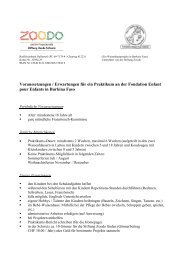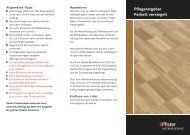12-2010 Citrus Flavonoids with Skin Lightening Effects ... - Hostpoint
12-2010 Citrus Flavonoids with Skin Lightening Effects ... - Hostpoint
12-2010 Citrus Flavonoids with Skin Lightening Effects ... - Hostpoint
Create successful ePaper yourself
Turn your PDF publications into a flip-book with our unique Google optimized e-Paper software.
COSMETICSSKIN LIGHTENINGproduct application and then 1% of liposomal-encapsulatedflavonoid mixturein a lotion was applied using a FinnChamber (7 mm). The product was left incontact <strong>with</strong> the skin for 48 hours (singlepatch test) or 24 hours and reapplied4 times (repeated patch test). The cutaneousreactions were evaluated 15 minutes,1 hour, and 24 hours after removalof the product. One chamber <strong>with</strong> distilledwater was used as negative controland for the single patch test only a positivecontrol was applied <strong>with</strong> 0.5% sodiumdodecyl sulphate (SDS).Application studyCaucasian skin: Six healthy female volunteersof Caucasian skin type (all Fitzpatrickskin types II) were recruited forapplication of the lotion or a control(formulation <strong>with</strong>out active ingredient).The cream was applied twice a day during8 weeks on the back of the hand andthe face. Melanin Index was measured onthe back of the hand and the face <strong>with</strong>a <strong>Skin</strong> Pigment Analyzer, SPA99 (Courage& Khazaka, Köln, Germany) and photographswere taken from the face andback of the hand <strong>with</strong> VisioFace Quick(Courage & Khazaka).Asian skin: Six healthy female volunteersof Asian skin type were recruitedfor application of the lotion on the externalforearm. The lotion was appliedtwice daily during 8 weeks. <strong>Skin</strong> colorwas measured <strong>with</strong> a Chromameter CR300(Konica Minolta, Dietikon, Switzerland).All volunteers were measured and photographed3 times; at day 0 (baseline),day 28, and day 56.Tyrosinase inhibition(mushroom tyrosinase)Inhibition of mushroom tyrosinase wastested in a concentration range from0.025 to 3 mg/ml. Up to 1 mg/ml inhibitionincreased dose dependently up to40% of untreated control, in concentrationhigher than 1 mg/ml there was nofurther increase possible (Fig. 2). Theflavonoid mixture showed an estimatedIC50 of 0.75mg/ml.- Fig. 1 HPLC chromatogram of the flavonoid mixtureCellular human Tyrosinase activity testTyrosinase activity was tested after incubationof NHEM <strong>with</strong> 0.004 to 0.4 mg/mlflavonoid mixture for 72 hours and subsequenttyrosinase extraction of thecells. As a control 0.02 mg/ml of kojic acidwas used. A concentration of 0.004 mg/ml of flavonoid mixture reduced the tyrosinaseactivity to 66%, 0.04 mg/ml to65%, and 0.4 mg/ml to 40%, whereas kojicacid reduced tyrosinase activity to61% at 0.02mg/ml (Fig. 3).Viability/ CytotoxicityUp to 0.4 mg/ml flavonoid mixture viabilitywas increased up to 130%, at1.<strong>12</strong> mg/ml a reduction of viability to83% was measured (Fig. 4). A concentrationof 3.3 mg/ml resulted in no remainingviability (data not visible). ResultsRaw materialThe various citrus extracts were tested bychromatographic separation for theircontent of narirutin, naringin, hesperidin,and neohesperidin.Two extracts were chosen, one from unripecitrus paradisi (grapefruit) and onefrom unripe citrus aurantium amarum(bitter orange) fruit and mixed. The resultingmixture of raw materials resultedin the following flavonoid contentof 4.9% narirutin, 22.0% naringin, 1.0%hesperidin, and 5.3% neohesperidin (Fig. 1).- Fig. 2 Mushroom tyrosinase inhibition of flavonoid mixture50 SOFW-Journal | 136 | <strong>12</strong>-<strong>2010</strong>




